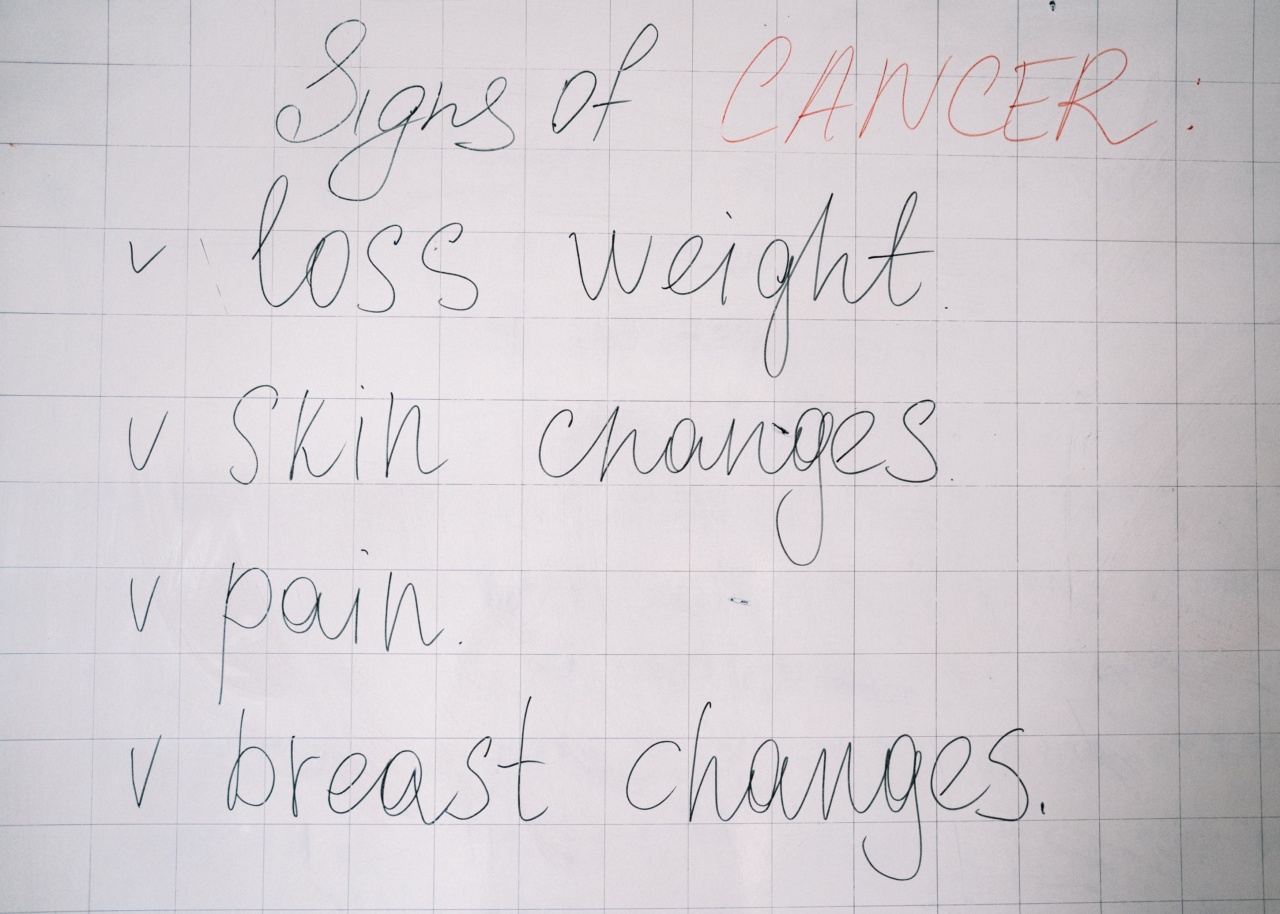When we think of the symptoms of lung cancer, we usually think of coughing, chest pain, and shortness of breath. However, lung cancer can manifest itself in many other ways that are often overlooked, leading to late diagnosis and poor prognosis.
Here are some of the unconventional symptoms of lung cancer that you should be aware of.
1. Hoarseness and Voice Changes
If you notice a sudden and persistent hoarseness in your voice, especially if you’re a non-smoker or a light smoker, it could be a sign of lung cancer.
Hoarseness is caused by the tumor affecting the recurrent laryngeal nerve, which controls the vocal cords. Other voice changes that could be a sign of lung cancer include a deepening or roughening of the voice.
2. Finger Clubbing
Finger clubbing is a condition in which the fingers and nails become enlarged and curved. It’s often a sign of lung cancer or another lung disease, and it’s caused by the lack of oxygen in the blood.
If you notice that your fingers are clubbed, it’s important to get yourself checked out by a doctor.
3. Unexplained Weight Loss
Unexplained weight loss is often a sign of cancer, including lung cancer. If you’ve lost more than 10 pounds without making any changes to your diet or activity level, it could be a cause for concern.
Weight loss is a sign that the cancer is affecting your metabolism and causing your body to burn more calories than it’s taking in.
4. Fatigue and Weakness
Unexplained fatigue and weakness can be a sign of many things, including lung cancer. If you’re feeling more tired than usual, or if you’re experiencing weakness in your muscles, it’s important to see a doctor.
Fatigue and weakness are often signs of the cancer spreading to other parts of the body.
5. Bone Pain
If you’re experiencing unexplained bone pain, especially in your back, hips, or chest, it could be a sign that the cancer has spread to your bones.
This is called metastatic bone pain, and it’s a common symptom of lung cancer that has progressed beyond the lungs. Bone pain can be a dull ache or a sharp stabbing pain, and it’s often relieved by rest or worsened by activity.
6. Headaches
Headaches can be a sign of many things, including stress or tension. However, if you’re experiencing persistent headaches, especially in the morning or accompanied by other symptoms, it could be a sign of lung cancer.
Headaches are often a sign that the cancer has spread to the brain.
7. Blood Clots
People with lung cancer are at an increased risk of developing blood clots, especially in the legs (deep vein thrombosis) and lungs (pulmonary embolism).
Blood clots can cause swelling, pain, and redness in the affected area, and they can be life-threatening if they travel to the lungs. If you notice any signs of blood clots, such as swelling or pain in your legs, chest pain, or shortness of breath, seek medical attention immediately.
8. Yellowing of the Skin and Eyes
If you notice a yellowing of your skin and eyes, it could be a sign of jaundice. Jaundice is often a sign of liver disease, but it can also be a sign of lung cancer that has spread to the liver.
Other symptoms of jaundice include dark urine, pale stools, and itching.
9. Swelling in the Face and Neck
If you notice swelling in your face and neck, especially on one side, it could be a sign of lung cancer that has spread to the lymph nodes. Other symptoms of lymph node involvement include coughing up blood, chest pain, and difficulty breathing.
10. Changes in Nails
If you notice changes in your nails, such as a separation of the nail from the nail bed, it could be a sign of lung cancer.
Nail changes are often seen in people with advanced lung cancer, and they’re caused by the cancer affecting the small blood vessels in the fingers and toes. Other nail changes that could be a sign of lung cancer include discoloration, brittleness, and ridges.
Conclusion
While coughing, chest pain, and shortness of breath are the most common symptoms of lung cancer, there are many other signs to be aware of.
If you notice any of the unconventional symptoms listed above, it’s important to see a doctor as soon as possible. Early diagnosis is key to successful treatment and a positive outcome.



























